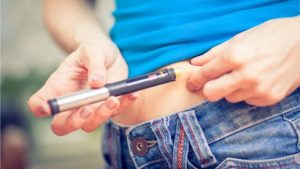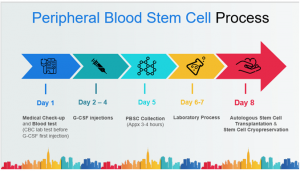Diseases January 8th, 2020
ស្តឹមសែលព្យបាលជម្ងឺទឹកនោមផ្អែម

ស្តឹមសែលព្យបាលជម្ងឺទឹកនោមផ្អែម
១ តើអ្វីទៅជាកោសិកាដើម (ស្តឹមសែល) និងរបៀបព្យាបាលជំងឺទឹកនោមផ្អែម?
 កោសិកាដើមគឺជាប្រភេទកោសិកាមួយដែលមានសក្តានុពលការផ្លាស់ប្តូ ជាច្រើន។ នៅក្នុងបរិយាកាសសមស្របពួកគេអាចធ្វើការផហលាស់ប្តូ ទៅក្នុងកោសិកាផ្សេងៗដូចជាគ្រាប់ពូជដែលពួកគេលូតលាស់នៅក្នុងជាលិកាផ្សេងៗនិងសរីរាង្គនិងឆ្លងកាត់ចំនួនជាក់លាក់នៃកោសិកាដើមនៅក្នុងខ្លួន។នៅពេលដែលកោសិកាដើមចូលទៅក្នុងជាលិកាលំពែងកោសិកាដើមនឹងធ្វើការផ្លាស់ប្តូនិងរីកធំធាត់ទៅក្នុងកោសិកាលំពែងដែលមានរាងដូចកោសិកាលំពែង នៅក្រោមការចាប់ផ្តើមនៃបរិយាកាសតូចៗនៃជាលិកាលំពែង កោសិកាដើមទៅជំនួសកោសិកាលំពែងដែលត្រូវបានខូចខាត ដើម្បីបញ្ជេញអាំងស៊ុយលីនដែលដើរតួនាទីនៅក្នុង ព្យាបាលជំងឺទឹកនោមផ្អែម។
កោសិកាដើមគឺជាប្រភេទកោសិកាមួយដែលមានសក្តានុពលការផ្លាស់ប្តូ ជាច្រើន។ នៅក្នុងបរិយាកាសសមស្របពួកគេអាចធ្វើការផហលាស់ប្តូ ទៅក្នុងកោសិកាផ្សេងៗដូចជាគ្រាប់ពូជដែលពួកគេលូតលាស់នៅក្នុងជាលិកាផ្សេងៗនិងសរីរាង្គនិងឆ្លងកាត់ចំនួនជាក់លាក់នៃកោសិកាដើមនៅក្នុងខ្លួន។នៅពេលដែលកោសិកាដើមចូលទៅក្នុងជាលិកាលំពែងកោសិកាដើមនឹងធ្វើការផ្លាស់ប្តូនិងរីកធំធាត់ទៅក្នុងកោសិកាលំពែងដែលមានរាងដូចកោសិកាលំពែង នៅក្រោមការចាប់ផ្តើមនៃបរិយាកាសតូចៗនៃជាលិកាលំពែង កោសិកាដើមទៅជំនួសកោសិកាលំពែងដែលត្រូវបានខូចខាត ដើម្បីបញ្ជេញអាំងស៊ុយលីនដែលដើរតួនាទីនៅក្នុង ព្យាបាលជំងឺទឹកនោមផ្អែម។
២ តើផ្នែកណានៃរាងកាយមានកោសិកាដើម?
កោសិកាដើមពេញវ័យត្រូវបានរកឃើញជាទូទៅនៅក្នុងខួរឆ្អឹង ប៉ុន្ដែបន្ទាប់ពីការប្រើប្រាស់ថ្នាំ ចំនួនកោសិកាដើមដែលត្រូវការសម្រាប់ការព្យាបាលក៏អាចត្រូវបានរកបានផងដែរនៅក្នុងឈាម។
៣ តើកោសិកាដើមណាដែលត្រូវប្រើ?
ជាមួយនឹងអ្នកជំងឺខ្លួន ឯង មិនមានបញ្ហានៃជំងឺឆ្លង កង្វះអ្នកបរិច្ចាគនិងការបដិសេធប្រព័ន្ធភាពស៊ាំទេហើយសុវត្ថិភាពគឺល្អ។
៤ តើធ្វើដូចម្តេចដើម្បីស្រង់ចេញកោសិកាដើមឈាម?
ការផ្លាស់ប្តូរកោសិកាដើមយកពីខ្លួនឯងតាមឈាម តម្រូវឱ្យមានការប្រើថ្នាំដើម្បីពន្យោចខួរឆ្អឹងហើយបន្ទាប់មកកោសិកាដើមត្រូវបានគេស្រង់យកចេញដោយម៉ាស៊ីនបំបែកកោសិកា (Apheresis Machine) ហើយបន្ទាប់មកស្យកទៅចាក់ចូលក្នុងសរីរាង្គវិញ។
៥ តើធ្វើដូចម្តេចដើម្បីប្តូរកោសិកាដើមដែលចំរាញ់ចេញពីឈាម?
កោសិកាដើមដែលស្រង់ចេញពីឈាម ត្រូវបានប្តូរចូលទៅក្នុងខ្លួនវិញតាមរយៈការចាក់តាមសរសៃឈាម។
៦ តើការប្តូរកោសិកាដើមស្រង់ចេញពីឈាមខ្លួនឯងមានសុវត្ថិភាពដែរឬទេ?
មានសុវត្ថិភាពណាស់។ កោសិកាដើមស្រង់ចេញពីឈាមខ្លួនឯងត្រូវបានគេប្រមូលនៅក្នុងបរិយាកាសដែលបិទជិតដោយប្រើប្រាស់វត្ថុធាតុដើមពីអាល្លឺម៉ង់ដើម្បីលុបបំបាត់និងជៀសវាងការចម្លងរោគ។ ការចាក់បញ្ចូលបំពង់ស្រូបយកសរសៃឈាមត្រូវបានធ្វើឡើងដោយអ្នកឯកទេសខាងវះកាត់ដើម្បីកាត់បន្ថយផលវិបាកដែលទាក់ទងនឹងឆ្អឹង។ រហូតមកដល់ពេលនេះផលវិបាកនៃនីតិវិធីគឺសូន្យ។
៧ តើវាត្រូវការរយៈពេលប៉ុន្មានដើម្បីចាប់ផ្តើមកាត់បន្ថយថ្នាំទឹកនោមផ្ងែម បន្ទាប់ពីការព្យាបាលនេះ?
វាត្រូវចំណាយពេលប្រហែល ៣ ទៅ ៦ខែបន្ទាប់ពីការព្យាបាលនិងបន្ថយចំនួនថ្នាំទឹកនោមផ្អឺម។
(ទោះជាយ៉ាងណាក៏ដោយអ្នកជំងឺទឹកនោមផ្អែមដែលមានកម្រិតជាតិស្ករក្នុងឈាមខ្ពស់គួរតែមានការចាក់ស្តឹមសែលយ៉ាងហោចណាស់ ២ទៅ៣ដង)។
៨ តើមានប្រតិកម្ម ឬផលប៉ះពាល់បែបណាខ្លះនៃការព្យាបាលនេះ?
អ្នកជំងឺអាចមានការឈឺចាប់ឆ្អឹងនិងឆ្អឹងខ្នងក្នុងដំណាក់កាលនែការចាក់ថ្នាំដំណាក់កាលដំបូងប៉ុន្តែពួកគេអាចទ្រាំទ្របានទាំងស្រុង។ មិនមានភាពមិនស្រួលជាក់ស្តែងនិងប្រតិកម្មមិនល្អត្រូវបានគេរកឃើញនៅក្នុងករណីដែលបានអនុវត្តហើយសុវត្ថិភាពគឺល្អ។
៩ ប្រសិនបើការព្យាបាលនេះបរាជ័យ, តើវានឹងធ្វើឱ្យស្ថានភាពជំងឺទឹកនោមផ្អែមរបស់អ្នកជំងឺកាន់តែធ្ងន់ធ្ងរដែរឬទេ? ដោយសារតែកោសិកាដើមផ្ទាល់របស់អ្នកជំងឺត្រូវបានគេប្រើ មិនមានការខូចខាតដល់រាងកាយទេ ដូច្នេះស្ថានភាពជំងឺទឹកនោមផ្អែមរបស់អ្នកជំងឺនឹងមិនធ្វើឱ្យធ្ងន់ធ្ងរទេ។
១០ តើអាយុប៉ុន្មានសមស្របសម្រាប់ការព្យាបាលនេះ?
វាល្អបំផុតក្នុងការមានអាយុ 18-65 ឆ្នាំ។ ប្រសិនបើអ្នកមានសុខភាពល្អអាយុអាចច្រើនជាងនេះក៍បានដែរ)។
១១ តើនរណាគួរធ្វើការព្យាបាលកោសិកាដើមពីឈាមផ្ទាល់របស់អ្នកជំងឺ?
អ្នកអាចពិចារណាការប្តូរកោសិកាដើមផ្ទាល់របស់អ្នកជំងឺដោយមានលក្ខខណ្ឌដូចខាងក្រោមនេះ: (1) អ្នកជម្ងឺទឹកនោមផ្អែមប្រភេទទី 2 (អាយុ 18-65 ឆ្នាំ) ។ (3) ការប្រើអាំងស៊ុយលីននិង / ឬថ្នាំទឹកនោមផ្អែមផ្សេងៗទៀតដោយសមហេតុផលអាចទទួលយកបាន។
១២ តើធ្វើដូចម្តេចដើម្បីជ្រើសរើសពេលវេលានៃការប្តូរកោសិកាដើមផ្ទាល់របស់អ្នកជំងឺ?
ពីបទពិសោធន៍នៃការព្យាបាលដោយកោសិកាដើមផ្ទាល់របស់អ្នកជំងឺដល់ការព្យាបាលនៃជំងឺទឹកនោមផ្អែមទោះបីជាការព្យាបាលនេះមានប្រសិទ្ធភាពចំពោះប្រភេទជំងឺទឹកនោមផ្អែមប្រភេទផ្សេងៗគ្នាក្នុងដំណាក់កាលផ្សេងៗគ្នា នៅក្នុងការជ្រើសរើសនៃការព្យាបាលផ្សេងៗគ្នាក៍ដោយ ចំពោះអ្នកជំងឺវ័យក្មេង ការវិវត្តន៏នៃជំងឺមានពេលខ្លីជាង ផលវិបាកនៃជំងឺទឹកនោមផ្អែមមានភាពតិចជាង។ ការព្យាបាលមានប្រសិទ្ធិភាពល្អ និងសុវត្ថិភាពនៃការព្យាបាលល្អ ដូច្នេះវាជាការល្អបំផុតត្រូវប្រញាប់ និងមិនខកខានពេលវេលាដ៏ល្អបំផុតដើម្បីមកទទួលការព្យាបាលដោយប្រើស្តឹមសែល។
១៣ ប្រសិនបើអ្នកបានធ្វើការព្យាបាលដោយជោគជ័យនោះតើអ្នកអាចឈប់ប្រើការត្រួតពិនិត្យរបបអាហារដែរឬទេ?
ទេការត្រួតពិនិត្យរបបអាហារត្រឹមត្រូវគឺចាំបាច់សម្រាប់អ្នកជំងឺទឹកនោមផ្អែមទាំងអស់។
បន្ទាប់ពីការព្យាបាលនេះតើអ្នកនៅតែត្រូវការការធ្វើលំហាត់ប្រាណឱ្យបានត្រឹមត្រូវដែរឬទេ?
ត្រូវការការហាត់ប្រាណទៀងទាត់។
ចំណាំ – ចំនួននៃការចាក់ស្តឹមសែលនិងរយៈពេលនៃការព្យាបាល អាស្រ័យលើភាពធ្ងន់ធ្ងរនៃជំងឺរបស់អ្នក។
លទ្ធផលសម្រេចបានបន្ទាប់ពីការប្តូរកោសិកាដើមឈាម
ធ្វើឱ្យប្រសើរឡើងនូវសកម្មភាពរាងកាយ
– កាត់បន្ថយហានិភ័យនៃផលវិបាកនៃជំងឺទឹកនោមផ្អែម
– ការថយចុះគួរឱ្យកត់សម្គាល់នៃជាតិស្ករក្នុងឈាមនិងកម្រិត Hemoglobin A1C
– ការថយចុះគួរឱ្យកត់សម្គាល់នៃកំរិត Triglyceride
– ធ្វើឱ្យប្រសើរឡើងនូវមុខងារតម្រងនោមជាមួយនឹងការថយចុះកម្រិត creatinine
– ការបាត់ការខូចខាតសរសៃប្រសាទ (ការស្ពឹក)
– ការបាត់រមាស់ (រមាស់ស្បែក)
– ការបាត់នោមពេលយប់ (ត្រូវដាស់ពីដំណេកដើម្បីទៅទឹកនោម)
សូមចុចត្រង់នេះ សម្រាប់ពត៌មានបន្ថែម។




